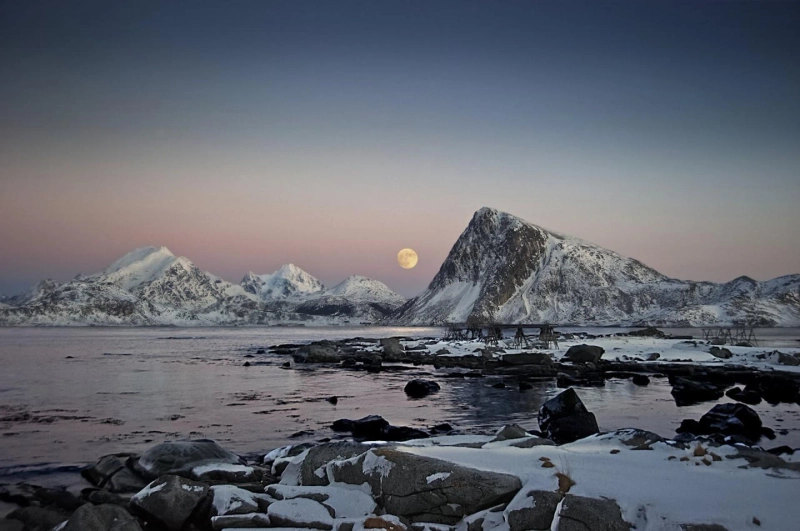For most of us, the day ends with a sunset and the natural rhythm of light and darkness. But in the Arctic Circle during summer, this rhythm breaks. The sun never sets—literally. Known as the Midnight Sun, this phenomenon offers one of the most mind-bending and exhilarating travel experiences on Earth. From surreal 2 a.m. hikes to golden-lit fjords, Arctic summer travel is both a test of perception and an unforgettable journey into a world where time feels suspended.
What Is the Midnight Sun?
The Midnight Sun occurs during the summer months in places north of the Arctic Circle (and south of the Antarctic Circle in the southern hemisphere). During this time, the tilt of the Earth causes the sun to remain visible for 24 hours. Depending on how far north you go, this phenomenon can last for days or even months. In towns like Tromsø, Norway or Barrow (Utqiaġvik), Alaska, the sun circles the sky but never dips below the horizon.
Where to Experience It
1. Svalbard, Norway
Svalbard is the northernmost settlement with a permanent population, and it experiences Midnight Sun from April to August. It offers ghostly glacier views, polar bear sightings, and eerie silence broken only by creaking ice and seabird calls.
2. Tromsø, Norway
Although more accessible than Svalbard, Tromsø is no less magical. It's known for its dramatic fjords, midnight kayaking trips, and lively local culture that thrives under 24-hour sunlight.
3. Abisko, Sweden
Abisko combines the Midnight Sun with mountain hiking, wildflower-filled valleys, and Sweden’s longest hiking trail, the Kungsleden. There’s even a chairlift that runs past midnight, carrying travelers to mountaintop viewpoints.
4. Finnish Lapland
Lapland is famous for its winter wonderland, but its summer side is arguably more mystical. Midnight Sun festivals, Sami cultural experiences, and lakeside saunas under a glowing sky await those who venture north.
5. Alaska, USA
Places like Fairbanks and Utqiaġvik offer Midnight Sun experiences coupled with native Alaskan culture, wildlife reserves, and salmon runs that attract grizzlies in full view of wide-eyed visitors.
What It’s Like to Live Without Darkness
Traveling under the Midnight Sun is surreal. Locals often warn visitors to bring blackout curtains and sleep masks. Time loses meaning when it’s bright enough to hike at 1 a.m. or sip coffee at an outdoor café in the dead of night. This constant daylight triggers a burst of energy in many travelers—adrenaline, awe, and restlessness coalesce in an almost dreamlike state.
While invigorating, it also requires adjustment. Many visitors experience temporary insomnia, while others feel invigorated and hyperproductive. It’s common to find yourself hiking, kayaking, or just wandering long past what your internal clock says is bedtime.
Cultural Celebrations and Local Life
In many Arctic regions, the Midnight Sun isn’t just a meteorological event—it’s a cultural highlight. Celebrations range from music festivals to communal gatherings:
- Norway’s Midnight Sun Marathon in Tromsø is one of the most unique races in the world, with runners starting late at night under a golden sky.
- Midsummer festivals in Sweden and Finland include bonfires, flower crowns, and dancing that lasts into the "night" that never arrives.
- Indigenous communities like the Sami use this time to fish, gather berries, and celebrate nature with traditional practices rarely seen by outsiders.
Practical Travel Tips
- Travel between May and July for peak Midnight Sun conditions.
- Pack sleep aids like masks and melatonin.
- Use sunblock constantly—sunburn at midnight is not a myth.
- Stay flexible—weather can change quickly in the Arctic, and flights may be delayed or rerouted.
- Respect local customs—many Arctic communities have fragile ecosystems and cultural traditions worth preserving.
Why It’s Worth the Journey
Traveling under the Midnight Sun is unlike any beach vacation or mountain escape. It bends the laws of daily life, giving you more hours to explore, reflect, and marvel at nature. The Arctic summer isn’t about luxury or relaxation—it’s about raw, primal connection to the Earth and sky.
Whether you’re hiking across wind-whipped tundra or sitting silently beside a lake that never falls into shadow, the Midnight Sun reminds us that the world is full of places that defy expectation and reset your sense of wonder.
FAQs
What is the best time to see the Midnight Sun?
In most Arctic regions, the best time is between late May and mid-July, though some areas like Svalbard experience it from late April to mid-August.
Is it safe to travel to Arctic regions in the summer?
Yes, most Arctic destinations are very safe in summer, with the biggest challenges being wildlife awareness, unpredictable weather, and logistics.
Can I see the Northern Lights during the Midnight Sun?
No. The Midnight Sun period is too bright for auroras. The best time to see the Northern Lights is in winter, when nights are longest.


